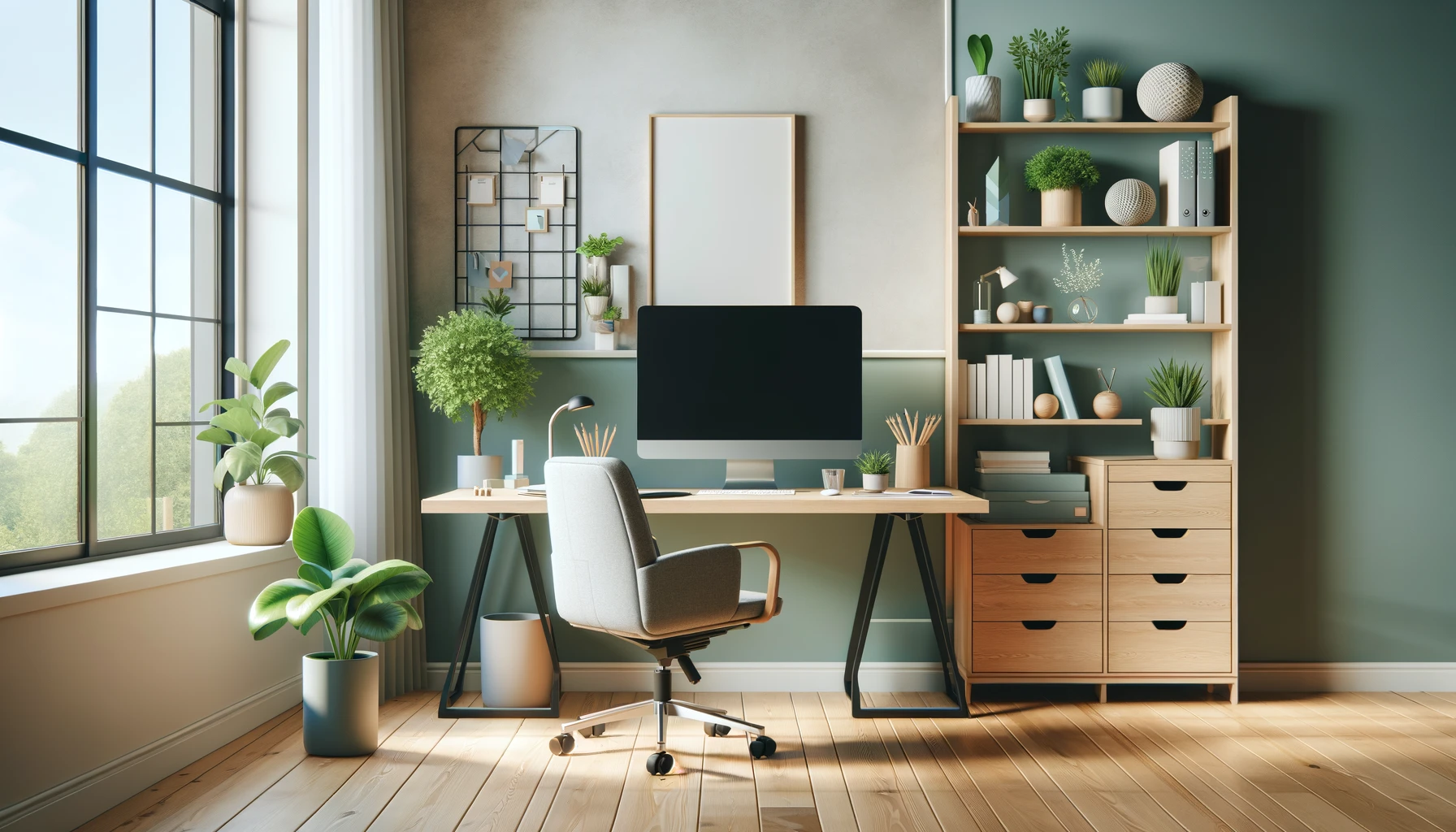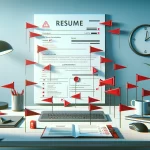In the rapidly evolving landscape of today’s workforce, the shift from bustling offices to the quiet corners of our homes has been both a blessing and a challenge.
As we navigate this transition, setting up a dedicated workspace emerges not just as a mere recommendation, but as an essential cornerstone for unlocking unparalleled productivity and maintaining work-life harmony.
This transformation goes beyond creating a physical space; it entails crafting an environment that awakens your motivation, nurtures your creativity, and propels you toward achieving your daily goals with vigor.
Imagine stepping into a space that immediately cues your brain into focus mode—a personal haven where distractions dissolve and productivity reigns supreme.
The art of establishing such an environment is nuanced, blending elements of ergonomics with touches of personal flair to fashion not just a workstation but an oasis tailored to inspire efficiency and innovation.
But how does one curate such an ecosystem within their home? The answers lie ahead.
As we delve deeper into the nuances of creating your ideal workspace at home, prepare to uncover practical strategies that transform ordinary spaces into realms of unmatched productivity.
From ergonomic insights never foretold to novel ideas integrating technology seamlessly with function—the journey ahead promises insight and inspiration alike at every turn.
Keep reading to discover how rethinking your approach can breathe new life into working from home—making it more than just productive; making it joyously fruitful.
Crafting a Purposeful Daily Ritual
A meticulously curated daily ritual is not just about structuring your day; it’s about anchoring your focus, channeling productivity, and fostering an environment where creativity flourishes amidst the comforts of home.
Establishing a routine injects predictability into your workday, which can significantly mitigate stress and enhance time management.
However, there’s an art to crafting this routine – it must resonate with your personal rhythm and professional demands while leaving room for life’s unpredictable moments.
Begin by designating clear start and end times to encapsulate your working hours. This demarcation acts as psychological signals that help transition between personal and professional states of being.
Within this framework, incorporate structured breaks—akin to short mental retreats—to rejuvenate the mind. These pauses are not mere interruptions but pivotal moments planned with intent; they could involve stepping outside for fresh air, indulging in a brief meditation session or enjoying a cup of tea away from screens.
In weaving these elements together harmoniously within your day, you’re not just adhering to a schedule — you’re creating a rhythmic symphony that guides the ebb and flow of productive energy.
When shaping this daily ritual, infuse it with activities that ignite joy or spark creativity outside of work tasks as well – be it morning stretches accompanied by uplifting music or setting aside time for reading in quiet solitude before diving into emails.
Remember, flexibility is key: allow your routine to evolve based on what works best for you over time rather than sticking rigidly to one formula. The aim is not perfection but progress toward maintaining consistency in productivity while embracing the fluid dynamics of working remotely.
Crafting a Distraction-Proof Sanctuary
In today’s digital era, where notifications and digital interruptions are incessant, creating a distraction-proof workspace is akin to cultivating a sacred haven of focus. While the concept might appear daunting at first glance, with deliberate actions and mindfulness, you can transform any corner of your home into a fortress against distractions.
Start by identifying the primary sources that derail your concentration. Is it the constant pinging of social media notifications or the visual clutter around your desk? Once pinpointed, take targeted measures such as using app blockers during work hours or adopting minimalism in your workspace setup to ensure these distractions don’t stand a chance.
Another less explored yet significantly impactful strategy involves tapping into our sensory experiences to ward off potential disturbances. Curating an ambient environment through subtle background music or natural lighting can not only enhance focus but also make your workspace inviting and conducive to prolonged periods of deep work.
Interestingly, research has shown that certain scents like lemon and rosemary can boost concentration levels. Consider integrating essential oils or scented candles into your office space for an aromatic tranquility bubble that shields you from both external noise and internal wanderings.
Remember, minimizing distractions isn’t just about removing what’s extraneous; it’s equally about infusing elements that foster unwavering attention.
Mastering Time Management: The Power of Time Blocking
Harnessing the power of time blocking can transform a chaotic work-from-home day into a series of productive, focused sessions. This technique isn’t just about allotting specific hours to tasks; it’s about respecting your personal rhythms and optimizing your energy levels throughout the day.
Visualize dividing your day into concrete blocks, each dedicated to a particular task or type of work – similar to scheduling appointments with yourself. But here’s where the fresh perspective comes in: instead of rigidly adhering to these blocks, use them as flexible guides that accommodate spontaneous priorities while ensuring that crucial tasks aren’t neglected.
Imagine starting your morning with a block reserved for deep, strategic work when your mind is freshest, followed by client communications post-lunch when you’re easing back into focus mode. Incorporate shorter blocks for breaks—yes, schedule those too—to recharge; it’s like hitting the refresh button on your browser but for your brain.
By assigning realistic time slots to different activities based on their priority and mental demands, you’re not only setting clear boundaries but also granting yourself permission to be fully immersed in one task at a time without guilt over neglecting others.
Think of these blocks as fluid containers; they hold what is most vital at any moment and allow water—the lesser tasks—to fill up remaining spaces naturally.
Revitalize Your Focus: The Power of Regular Breaks
In the midst of a busy workday, the idea of pausing may seem counterintuitive. However, taking regular breaks is not merely about stepping away from your desk; it’s about recharging your productivity batteries.
Studies have shown that our brains can only maintain peak concentration for a limited amount of time before experiencing diminishing returns.
By incorporating short, intentional breaks into your schedule, you allow your mind to rest and reset, leading to improved focus and efficiency when you return to work.
Moreover, regular breaks are not just about physical relaxation but also mental rejuvenation. Stepping out for a brisk walk or engaging in a brief mindfulness exercise can clear mental clutter and enhance creativity.
Embrace these moments as opportunities to detach from work tasks temporarily and recalibrate your cognitive processes. Remember, the goal is not simply to fill break times with mindless distractions but rather to engage in activities that promote holistic well-being and ultimately amplify your performance during working hours.
Incorporating Physical Activity Into Your Daily Routine
One of the lesser-known secrets to maintaining productivity while working from home is integrating physical activity into your daily routine.
While it may seem counterintuitive to take breaks for exercise when you have deadlines looming, studies show that regular physical movement can actually boost cognitive function and overall work performance.
Whether it’s a quick yoga session in the morning, a brisk walk during lunch break, or some stretching exercises between tasks, incorporating even small amounts of physical activity can do wonders for your focus and energy levels.
Moreover, the benefits extend beyond just immediate mental clarity. Engaging in physical activity releases endorphins – the feel-good hormones that reduce stress and anxiety levels. By weaving moments of movement throughout your day, you not only enhance your productivity but also promote better mental well-being.
Consider setting reminders on your phone to stand up and stretch every hour or scheduling short workout sessions as part of your daily agenda. Remember, taking care of your body is an essential pillar in achieving long-term success in remote work scenarios.
Utilizing Technology Tools for Organization and Communication
In today’s digital age, the array of technology tools available to enhance organization and communication in remote work settings is vast and continually evolving. From project management platforms like Trello and Asana to communication apps such as Slack and Zoom, these tools can revolutionize how individuals working from home streamline their tasks and interactions.
One key benefit of leveraging technology for organization is the ability to create virtual workspaces that mimic traditional office environments. Through shared calendars, task boards, and messaging channels, teams can collaborate seamlessly regardless of physical distance.
Moreover, with the rise of AI-powered assistants like Google Calendar or Microsoft Teams integrating into daily workflows, automation plays a significant role in reducing manual workload so that professionals can focus on high-value tasks rather than administrative duties.
Optimize Your Workflow with Task Boards
When it comes to maximizing productivity while working from home, one of the most effective strategies is creating organized to-do lists or task boards.
These visual aids not only help you prioritize your tasks but also provide a clear overview of what needs to be done. Whether you prefer a traditional pen-and-paper list or a digital task board, finding the right method that suits your workflow is key.
Furthermore, breaking down larger projects into smaller, more manageable tasks on your to-do list can help alleviate feelings of overwhelm and boost motivation. By setting specific goals for each day and tracking your progress visually, you can stay on track and maintain momentum throughout your workday.
Additionally, incorporating deadlines or time estimates next to each task can create a sense of urgency and drive efficiency in completing them.
Incorporating color coding or labels into your task boards can also enhance organization and categorization. By assigning different colors to various types of tasks (such as urgent tasks, long-term projects, or personal errands), you can quickly identify priorities at a glance.
This visual differentiation not only adds clarity to your workload but also streamlines decision-making when determining which tasks require immediate attention versus those that can be tackled later in the day. Implementing these visual cues can transform your traditional to-do list into a dynamic tool for optimizing productivity at home.
Setting Clear Goals and Priorities
In the realm of remote work, setting clear goals and priorities is akin to charting a course through uncharted waters. Without a compass or map, one can easily veer off course and lose sight of their destination.
The beauty of working from home lies in the flexibility it offers, but this same freedom can quickly become a double-edged sword if not wielded wisely. To navigate these unchartered territories successfully, it’s crucial to establish concrete goals that serve as beacons guiding your daily efforts.
Moreover, juggling multiple tasks while working remotely can often feel like attempting to keep numerous plates spinning simultaneously. By meticulously prioritizing projects based on urgency and importance, individuals can streamline their workflow and ensure that vital tasks take precedence over less critical ones.
This discerning approach not only enhances productivity but also cultivates a sense of accomplishment as each task is tackled systematically according to its significance. Ultimately, by setting clear goals and establishing priorities, remote workers empower themselves to steer their professional ship confidently amidst the ebb and flow of daily demands.
Explore Different Productivity Techniques
One of the most effective productivity techniques that many remote workers swear by is the Pomodoro Technique. This method involves breaking your work into focused intervals, typically 25 minutes long, followed by a short break.
By setting a timer and committing to a specific task for that time frame, you can maintain high levels of concentration and avoid burnout.
The Pomodoro Technique emphasizes the importance of regular breaks to recharge your energy and maintain sustainable productivity throughout the day.
In addition to the Pomodoro Technique, another valuable approach worth exploring is Time Blocking. This strategy involves allocating specific blocks of time in your schedule dedicated to different tasks or types of work.
By establishing clear boundaries between activities such as checking emails, attending meetings, and deep focus work sessions, you can enhance efficiency and minimize distractions.
Time blocking allows you to prioritize important tasks effectively and ensures that each aspect of your work receives dedicated attention without overwhelming yourself with multitasking.
Experiment with various productivity techniques to discover what works best for your workflow and tailor them to suit your unique needs while working from home.





